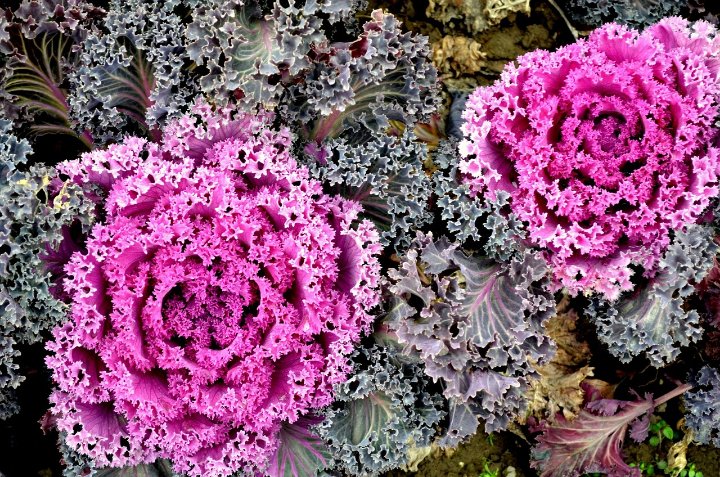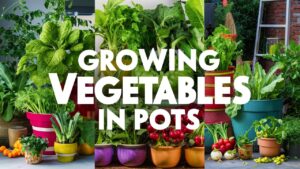Ornamental kale, with its vibrant and intricately colored foliage, adds a striking visual appeal to gardens and landscapes. These stunning plants are not only beautiful but also easy to grow, making them a popular choice among gardeners. Whether you’re looking to add a splash of color to your flower beds, borders, or containers, ornamental kale is sure to make a statement. By following a few simple guidelines, you can cultivate healthy and vibrant ornamental kale plants that enhance the beauty of your outdoor space.
Best Ornamental Kale Varieties
| Image | Name | Rating | Shop |
|---|---|---|---|
 | Brassica Oleracea Ornamental Cabbage |  | |
 | Colorful Japanese Ornamental Cabbage Osaka Mix |  | |
 | Flowering Kale Large Leaf Mix |  |
Ornamental Kale Hardiness Zones
Ornamental kale is remarkably adaptable and can thrive in a wide range of climates, spanning USDA hardiness zones 2 to 11. This versatility makes it suitable for gardens across different regions, from cooler northern climates to warmer southern areas. Whether you’re gardening in a chilly mountain region or a balmy coastal area, ornamental kale is sure to thrive in your garden.
How Much Sun Do Ornamental Kale Need
Ornamental kale thrives in full sun, requiring at least six hours of direct sunlight per day to develop its vibrant colors and compact growth habit. Plant them in a location where they can soak up the sun’s rays and bask in its warmth. In regions with scorching summer temperatures, providing some afternoon shade can help protect them from excessive heat and prevent leaf scorch.
Ornamental Kale Soil Requirements
When it comes to soil, ornamental kale prefers rich loam that is well-draining and retains medium moisture levels. Ensure the soil is loose and crumbly to allow for proper root development and drainage. The pH level of the soil should be slightly acidic, ranging from 5.5 to 6.5, to ensure optimal nutrient uptake and plant growth.
Ornamental Kale Plant Spacing
When planting ornamental kale, space them approximately 12 to 18 inches apart to allow for proper air circulation and prevent overcrowding. This spacing ensures that each plant has enough room to develop fully and showcase its vibrant foliage. Additionally, planting them in groups or clusters can create a striking visual impact in your garden or landscape.
Ornamental Kale Temperature Requirements
Ornamental kale thrives in cool temperatures and is remarkably cold-tolerant, making it an excellent choice for fall and winter gardens. In fact, ornamental kale won’t develop its signature colors until it experiences a light frost. These hardy plants can survive temperatures down to 5 degrees Fahrenheit, making them suitable for gardens in even the coldest climates.
Ornamental Kale Fertilizer Requirements
Ornamental kale is a minimal feeder and doesn’t require much fertilization to thrive. In fact, excessive fertilization can lead to leggy growth and reduced vibrancy of the foliage. Avoid fertilizing ornamental kale during active growth periods, as this can result in lush foliage at the expense of vibrant colors. Instead, amend the soil with compost or organic matter at planting time to provide essential nutrients for healthy growth.
Ornamental Kale Water Requirements
Ornamental kale requires consistent moisture to thrive, especially during periods of hot, dry weather. Water them regularly, keeping the soil evenly moist but not waterlogged. Mulching around the base of the plants can help retain soil moisture and suppress weeds, ensuring that ornamental kale plants have access to the water they need to flourish.
Ornamental Kale Humidity Requirements
Ornamental kale is relatively tolerant of humidity and can thrive in a wide range of conditions. In the heat of summer, humidity is not typically a problem for ornamental kale plants. However, in the fall, when temperatures cool and humidity levels rise, ornamental kale may be susceptible to bacterial and fungal problems such as leaf spots, blackleg, black rot, and yellowing. To minimize the risk of disease, ensure proper air circulation around the plants and avoid overhead watering.
Ornamental Kale Pests and Diseases
While ornamental kale is relatively pest and disease-resistant, it can occasionally encounter issues with pests such as cabbage worms, cabbage loopers, flea beetles, caterpillars, thrips, slugs, and aphids. Monitor your plants regularly for signs of pest infestations and take appropriate measures to control them, such as handpicking or using insecticidal soap. Additionally, ornamental kale may be susceptible to diseases such as leaf spots, blackleg, black rot, and yellowing. Practice good garden hygiene and remove any infected plant material to prevent the spread of disease.
In conclusion, growing and caring for ornamental kale is a rewarding experience that allows gardeners to enjoy the beauty and vibrancy of these stunning plants. By providing the right growing conditions, including full sun, well-drained soil, and consistent moisture, you can cultivate healthy and vibrant ornamental kale plants that enhance the beauty of your garden. With their striking colors and cold-hardy nature, ornamental kale is sure to become a cherished favorite in your garden or landscape.














